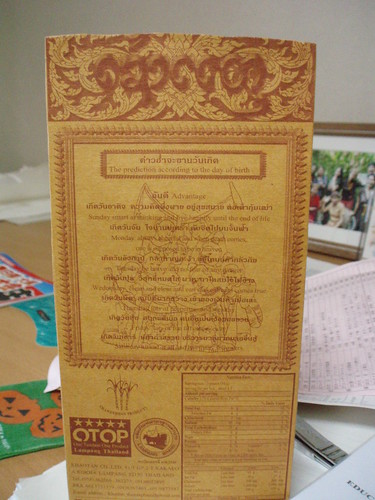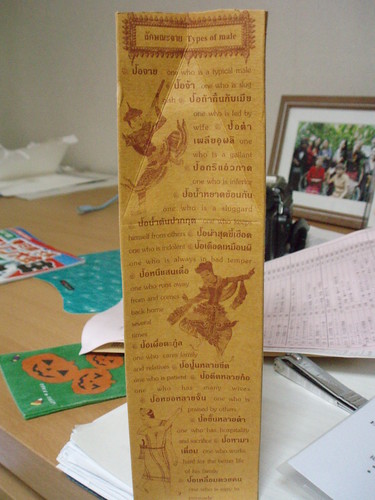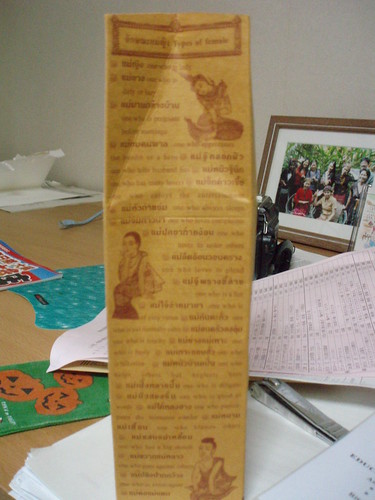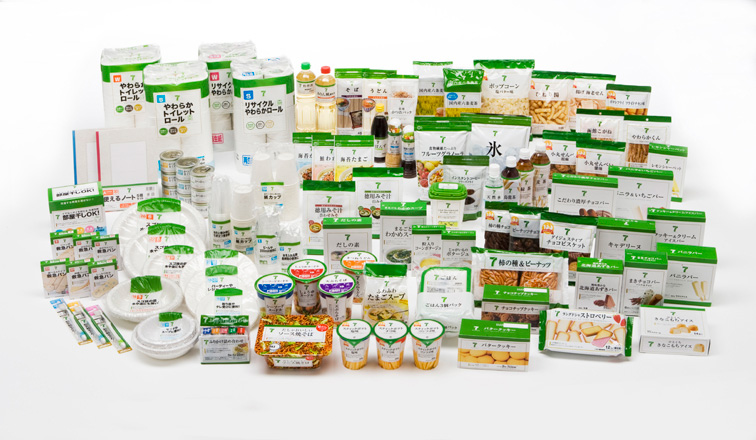I’ve been intrigued lately by some good pieces on gaijin personal finance. First there’s the blog Frugalista Japan, which is all about saving money and has some interesting tips to share. Then came this great piece on budgeting for the inaka lifestyle by Deas at “Rocking in Hakata.” And, of course, our own Adamu wrote recently about borrowing his way out of debt.
This stuff is great. For those of you who don’t know, I work in structured finance at a bank in Tokyo, which is an inherently unstable job these days (lots of going-away parties lately). To make matters worse, although my salary is pretty decent, going through three years of grad school gave me several figures of student loan debt to pay off, and I have to wire money to the US on a regular basis to cover these bills. So money management has been in the forefront of my mind for a while.
I started out keeping track of my accounts manually, but this carried three significant drawbacks. One was that it took a hell of a lot of time. One was the ongoing annoyance of fluctuating exchange rates and wire transfer fees, which really add up if you are doing things on a paycheck-to-paycheck basis. The other was that I would sometimes miscalculate something, or overlook a pending payment, and end up overdrafting one of my accounts, which can be REALLY expensive.
If you are rich, you can get an account with HSBC Premier and avoid many of these headaches. I am not rich, though, and even if I were, I would not want to stick 100 grand of cash into an uninsured account. Not in this economy.
Fortunately, the right accounting solution was in front of my eyes the whole time. Structured finance — whether in the form of asset-backed securities or syndicated loans (i.e. loans extended by a big group of banks rather than a single bank) — often revolves around the concept of “waterfalls.” This is the notion that some constant flow of money (business revenues, mortgage payments, etc.) trickles into an account somewhere and then gets divided among a bunch of recipients in a predetermined order on a regular basis, much like a multi-level waterfall pours water in different directions. For instance: “Bank A gets paid interest on its share of the loan, then any remainder gets split evenly between Banks A, B, C, and D, then the company which took out the loan gets to keep the rest.”
This concept works pretty well when you are getting a regular paycheck and need to pay bills in two countries. I set up a spreadsheet using Google Docs, and now I have an idea of exactly what to do with my money each month. I’ll start with the Japan side.
4/19/09 5/19/09
JAPAN
Last Balance xxxxxxx xxxxxxx
Paycheck 19th xxxxxxx xxxxxxx
Other Income 57,550
JAL Card 27th 11,800 0
View Suica 4th 207,431 60,000
E-Bank Deposit 158,000 183,000
Rent Last 90,000 90,000
Extraordinary 8,000
Discretionary 90,000 93,000
Wire to US 199,040
End JPY Bal xxxxxxx xxxxxxx
Each column represents the cash flows from one incoming paycheck (I get paid on the 19th) and any extra income, such as my commuting allowance or the upcoming teigaku kyuufukin bonanza. I pool my yen in the bank account where the paycheck comes in, and my two credit cards automatically pull payments from that account. (My utilities get billed to these cards as well; the April payment is high because I put a few sizable nomikai on my card for the points.)
Then I stick spending money in a separate account with eBank, which I use because of its awesome cash card (it works as a Visa card and can pull money for free from Yucho and 7/11 ATMs) and easy online banking interface. The “E-Bank Deposit” line gets automatically calculated based on how much I plan to spend in rent, extraordinary expenses and discretionary expenses.
The “discretionary” line is my pocket money, which I use for groceries, restaurants, booze, gadgets, hot dates or whatever else comes up during the week. I keep this budgeted at 3,000 yen per day/21,000 per week for simplicity’s sake: it varies in monthly amount because the months have slightly different lengths. Then there is a line for “extraordinary” payments: gifts, travel and other potentially big-ticket items which I know are coming up.
Finally, I have to send money to the US to pay student loans. The rather random-looking “wire to US” number comes from the bottom half of my spreadsheet, which looks like this.
4/19/09 5/19/09
USDJPY rate 99.56 97.52
US
Last Balance xxxxxxx xxxxxxx
Wire from JP 2,000.00
Interest 2.48 0.44
Wire Fee 18.00
Chase SLS Last 389.62 389.62
KHESLC 10th 456.00 456.00
Chase CC 15th 400.00 1,400.00
Other Spend 405.64
End USD Bal xxxxxxx xxxxxxx
It’s easiest to read this from the bottom. I have two student loan accounts, which draw from my US checking account automatically every month, as well as a US credit card which is still carrying the bill from my last trip to the States. I simply set up the spreadsheet to calculate the ending balance for each month based on the starting balance and the scheduled payments in between. Then, whenever the ending balance comes up negative, I drop in a big wire transfer to top it up.
The spreadsheet automatically updates the USD/JPY exchange rate based on Google Finance data (one of the advantages of using Google Docs for this purpose), and the formula for the outgoing transfer amount accounts for the transfer charge and the rate spread. So whenever I go to make a transfer, I overwrite the auto-updated exchange rate formula in the spreadsheet with whatever exchange rate was actually used (generally the same one if I am quick enough), and all the numbers line up perfectly.
The beauty of this system is that it makes it really hard to run out of cash or miss a payment on any of your accounts; you can simply tweak a couple of numbers (like wire transfer amounts or credit card payments) to keep everything in the black in any given pay period. Setting the spreadsheet to make negative numbers bold and red helps a lot. This also makes it easier to game exchange rate fluctuations, as you can move your transfers around based on your own estimates of when the rates will be good.
Just to be even more komakai, I also set up a running balance sheet for myself so that I can track how my net worth is doing. Although I started out doing this on a monthly basis, I switched to quarterly accounting recently after reading Nassim Taleb’s book Fooled by Randomness. Taleb makes many good points in this book, but one that stuck out in my mind is that keeping a very tight eye on financial indicators which are mainly relevant in the long term (stock prices, property values, etc.) is likely to cause more stress than the benefit of the additional information can justify. Personal net worth is one such indicator: it’s nice to know when you will pay off your debt, or how much dough you are set to hoard by retirement age, but you don’t need to know it on a monthly basis, as those months where you buy a plane ticket, give to charity or have a wild night in Roppongi are likely to turn you off to the whole idea of accounting for yourself.








